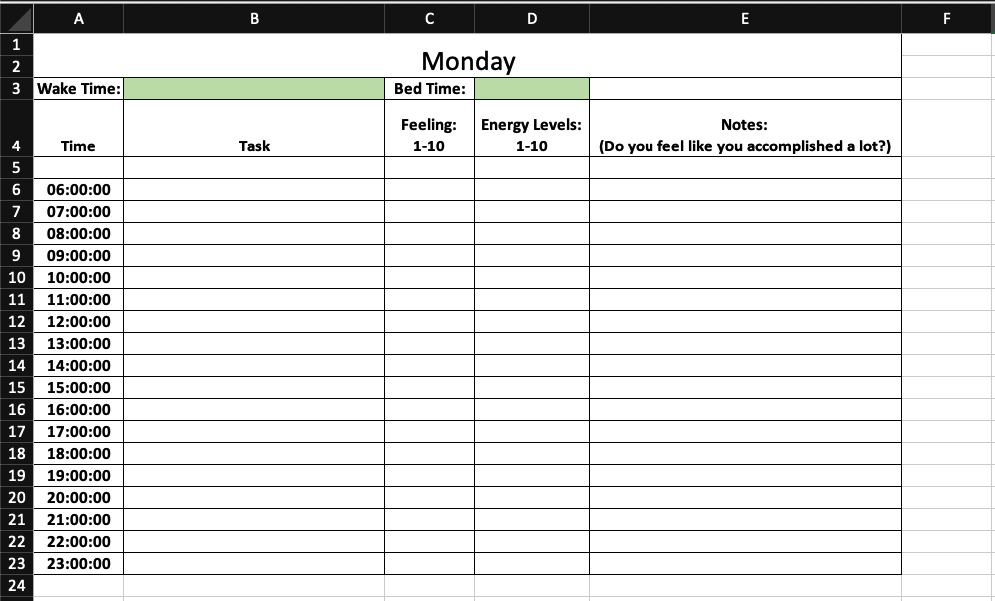Freelancing is not easy, especially for a beginner; there are no two ways about it. You will often find yourself juggling multiple projects and deadlines to keep yourself up to date and not lose clients. The biggest issue is that there are only so many hours in a day, and to make the transition from 9-5 jobs worth it; you need to have set hours. That’s why the key to unlocking your potential lies in finding your most productive hours as a freelancer and using them to your advantage.
Understanding how and when to work can change your life by making you more productive, accomplish more, and have more time for the things you enjoy. So, in this article, we will give you some tips that you can use to find those hours and make the most of them.
What Are Your Most Productive Hours?
Your most productive hours are the periods of time when you are most focused and engaged in your work. Understanding your peak hours can help you plan your schedule, so you work when you are most focused. Many factors contribute to your productivity, including your sleep quality, diet, environment, and relationships. Furthermore, you can’t expect to be productive during all hours of the day, so it is important to note (and make a note of) when you tend to be more focused and engaged.
Most people have a few hours during the day when they are at their most focused and engaged. Some people have higher productivity rates early in the morning; others in the afternoon; and some are even night owls, creating their best work at night.
It is important to note when you are most engaged with your work and when you tend to be most productive. Using this information, you can plan your work schedule around your most productive hours. The biggest question is; how do you know when you are most productive?
Strategies for Uncovering Your Most Productive Hours as a Freelancer
You can use a few simple points to determine which hours of the day are your most productive. The problem you need to be mindful of is that it will take some time. Unfortunately, and this is something you need to understand before you start, there is no easy fix, “magic pill,” or one-size-fits-all concept.
However, if you can understand that and consider it while you are working, you can reap the benefits of the process in as little as a week or two. So, grab yourself a notepad and pen or a sticky note on your laptop (personally, I prefer to use a spreadsheet, but again, this is totally individual), and let’s take a look at some of the things you can do.
- Start by keeping a detailed log of your daily activities, including the time of day and how you felt during each task.
- Pay attention to your energy levels throughout the day, and note when you feel most alert and focused.
- Experiment with different work schedules to see which makes you most productive.
- Try different working patterns, such as Pomodoro.
- Track your sleep patterns and get enough rest.
- Avoid multitasking as much as possible (it is sometimes unavoidable), as it can cause your productivity to reduce.
- Set aside specific times of the day for answering emails and responding to messages to avoid interruptions.
- Use time-tracking software to monitor your time on different tasks.
- Consider taking a productivity assessment test to understand your personal working style and preferences.
- Reflect on your most productive hours and make a schedule that will allow you to work as much as possible during those hours.
I have created a simple spreadsheet that you can easily copy if it helps:
Harnessing Your Energy Cycles
By learning when your most productive hours are, you can harness your energy cycles to your advantage. Remember, you will likely find that different tasks fit better to different days and times. For example, you may feel more creative on Mondays and Fridays, as you have recovered from the weekend and you know the weekend is near, respectively. Therefore, if you have tasks that require high creativity, such as writing, illustrating, designing, etc., you can plan those around the times that suit your mood.
Remember, you can always add another column to the spreadsheet, such as creativity, to track that too.
Planning your tasks at different times can help you to keep up with the schedule, stay productive, and get more work done.
Making the Most of Your Most Productive Hours as a Freelancer
After a while, maybe a week or two, you should start to see patterns in your notes that you have been making (providing you were). That is when you can start planning your schedule to fit your own cycles.
Every freelancer’s job is different, and that is one of the most appealing aspects of the job, in my opinion. Understanding the tasks you have to do is crucial, and it might be worth noting which tasks you do that require different working styles. For example, you may have creative work or tasks that you need to concentrate on without a need for much creativity (such as finances, quality assurance, etc.) or even monotonous tasks, such as filing, that do not need much of both.
Knowing how you usually feel and when can help you to plan those tasks to fit.
Tools and Resources for Enhancing Your Productivity During your Productive Hours
While there are simple methods you can use, such as spreadsheets, there are also more advanced resources that you can use to help you too. You may need to do some research for the best software for your needs, but personally, I like Trello for keeping track of my tasks within projects and Apple Reminders for keeping track of when my different productive hours are.
That’s not to say that those two will fit into your lifestyle as well as they do mine, but with the plethora of apps and software available, it shouldn’t be too hard for you to find something that suits you.
Paying Attention to Your Sleep Cycle
Sleep is one of the most important aspects of a productive day. If you’re tired, you’ll find it challenging to be productive, no matter what you do. You can identify your sleep cycle by writing down when you go to sleep and when you wake up naturally (write it down in the spreadsheet, too). The more you know about your sleep cycle, the better prepared you’ll be to deal with your energy levels and take appropriate actions to remedy any anomalies in your sleeping patterns. With this information, you can plan your daily routine to manage your energy levels as best as possible during your productive hours.
Nowadays, most fitness trackers can track your sleep and provide extra data like the times you hit REM (rapid eye movement) and deep sleep, making it easier to adjust accordingly. Some of the most valuable pieces of advice for improving sleep are:
- Having a weekly fitness routine [1];
- Cut off all technology (including TV) at least 2 hours before going to bed [2];
- Going to sleep and waking up every day around the same hour [3];
- Try to get at least 8 hours of sleep a day.
How to Create a Schedule That Works for You
The actual process of creating a schedule is very individual, and creating a work schedule may take trial and error. Still, with some planning and experimentation, you will find a plan that fits your lifestyle and tasks. Here is a reminder of some steps you can take:
- Determine your most productive hours;
- Experiment with different work schedules;
- Prioritize your tasks;
- Minimize interruptions;
- Track your progress;
- Consider your personal life;
- Be flexible;
- Reflect and adjust.
Remember that creating a work schedule that works for you may take some time and experimentation. Be patient with yourself, and don’t hesitate to make adjustments as needed.
Conclusion
Understanding your most productive hours is key to unlocking your potential as a freelancer. Keeping a detailed log of your daily activities, paying attention to your energy levels, experimenting with different work schedules, tracking your sleep patterns, and avoiding multitasking are great strategies for getting the most out of your job.
By taking the time to understand when you are most focused and engaged in your work, you can create a work schedule that works for you and make the most of your productive hours, but remember, finding those hours may take some trial and error. The time and effort you put in now will be worth it in the future, and if you start today, it may be sooner than you think.





